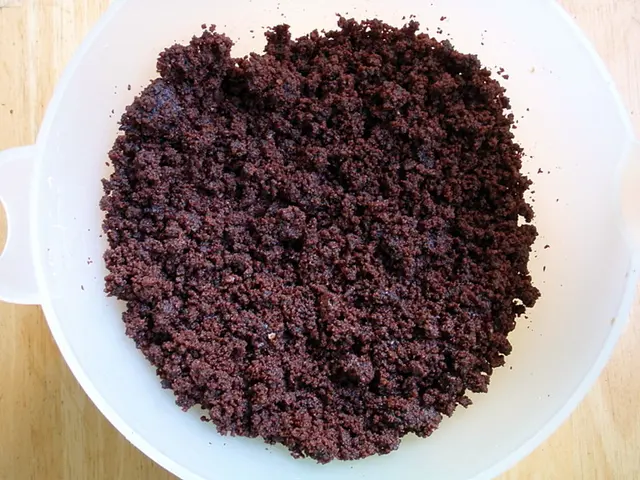Uncovering the Skewed Tide: Men's Higher Skin Cancer Mortality in Rhineland-Palatinate
Men in Rhineland-Palatinate Disproportionately Suffer Higher Skin Cancer Mortality Rates - Men in Rhineland-Palatinate experience a higher risk of fatal skin cancer compared to women.
In the heart of Germany, Rhineland-Palatinate presents a concerning trend: a disproportionate number of men die from skin cancer compared to women. The Institute for Digital Health Data (IDG) Rhineland-Palatinate, in a revelation made during the nationwide Skin Cancer Awareness Month of May 2023, reported that 118 men lost their lives to melanoma, a type of skin cancer, while only 67 women did.
This disparity could potentially be attributed to differing health behaviors, as per the medical director of the IDG, Katja Schwarze. She suggested factors such as the use of preventive examinations or protection from UV radiation may play a role.
Taking charge of one's health is crucial, according to Schwarze. Preventive measures like sun protection, self-examination, and regular dermatologist visits are paramount. "Early detection of melanoma boosts the chances of recovery, especially for men who should heed warning signs and attend dermatologist appointments," Schwarze emphasized.
Interestingly, the number of new cases of malignant melanoma, a particularly aggressive form of skin cancer, was almost identical between men (648) and women (634) in 2023, according to the IDG's latest evaluation. This difference in death rates despite similar case numbers suggests varying health behaviors.
Pondering the Possibilities: Differences in Health Behaviors and Outcomes
A multitude of factors could contribute to the gender disparities in skin cancer mortality rates.
- Outdoor Activities and UV Exposure: Men often participate in outdoor activities that expose them to higher levels of UV radiation, increasing the risk of skin cancer.
- Screening and Prevention Practices: Women tend to be more proactive about regular health screenings, resulting in earlier detection and better outcomes. They may also be more conscientious about using sunscreens and protective clothing.
- Biological Factors: Genetic susceptibility or immune system responses could potentially influence the gender disparities in skin cancer mortality. While these factors are still under investigation, they could contribute to the observed differences.
- Socioeconomic Influences: Factors such as healthcare access and health literacy could impact the timeliness and effectiveness of prevention and treatment measures, leading to higher rates of skin cancer among men.
- Cultural and Behavioral Attitudes: Traditional gender roles or masculine identity norms might discourage men from seeking medical help early, potentially leading to delayed diagnoses and poorer outcomes.
As more research is conducted, innovative technologies like AI-based scanners could help improve early detection and prognosis, potentially diminishing the gender disparities associated with skin cancer mortality.
- The community policy in Rhineland-Palatinate should emphasize the importance of vocational training to educate men on responsible sun protection practices during outdoor activities.
- To reduce the gender disparity in skin cancer mortality, vocational training programs could be implemented to teach men about the scientific aspects of health-and-wellness, particularly skin-care and prevention practices.
- The IDG, in collaboration with local organizations, could develop a men's health initiative offering vocational training on skin self-examination and regular dermatologist visits to encourage early detection of melanomas.
- Integrating skin cancer awareness and prevention into existing vocational training curriculums, such as those in the palatinate regional vocational schools, could help address the disparity in skin cancer mortality rates between men and women.
- As part of their community policy, the Rhineland-Palatinate government could introduce vocational training courses on skin cancer screening and prevention as a compulsory component of the male-oriented health-and-wellness programs.







